What are lichens and why can they serve as emergency food?
Lichens are true survivors, and we humans can benefit from them as remedies or even as food in a survival situation.
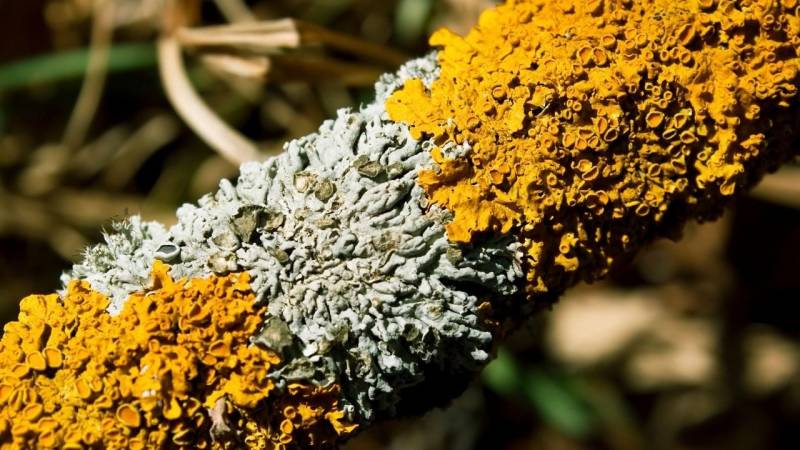

From Martin Gebhardt. Check out my “About me” page.
👉 The key facts from this guide
- Lichens are complex symbioses of fungi and algae that can survive in extreme conditions.
- There are different types of lichens, such as crustose, foliose, fruticose, and gelatinous lichens, which differ in color and growth form.
- Lichens absorb water through their surface and can survive long periods of drought.
- Reproduction occurs both sexually through the fungal partner and vegetative through specialized reproductive organs.
- Lichens serve as a food source and habitat for animals such as reindeer, insects, and birds.
- Humans use lichens as food, medicine, dye, and in the perfume industry.
Surely, you have already learned about the most unusual plants.
But have you ever looked into the topic of lichens?
Such a complex system should make the heart of a botanist or natural scientist beat faster.
Below, you will first learn general information about the historical awareness of lichens. Afterward, there are brief explanations about the structure of the entity, the different types, and their water balance.
The spread and reproduction of lichens should not be neglected.
Of course, the plant also serves as a source of food or habitat for some animals.
A special aspect is the use by humanity, which will be discussed at the end.
Brief historical overview
Even in ancient times, people believed that lichens were tree growths or pure algae. This is evident from the work "History of Plants" by Theophrastos.
From the 17th century, botanists referred to the plant as lichen, with the meaning of "wart" in German. This is due to the appearance of the fruiting body.
The Swedish naturalist Carl von Linné, who described 80 species of lichens, referred to them as "the poorest peasant people of vegetation".
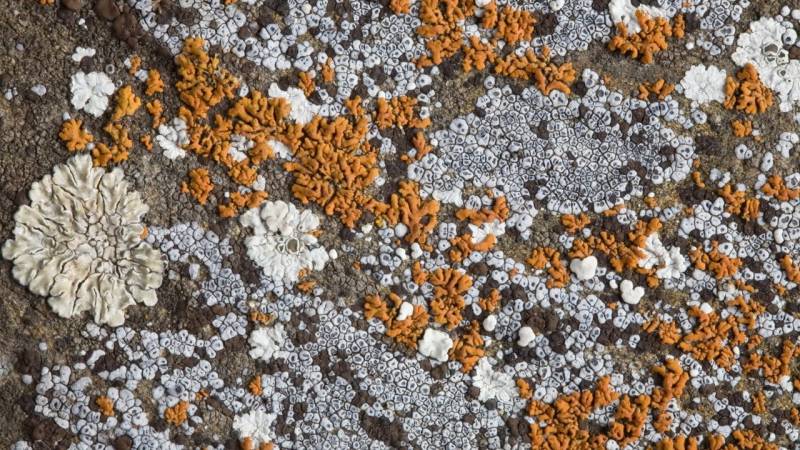
The science of lichenology was established by botanist Erik Acharius in 1803. It already contained 906 species of lichens.
The fact that lichens are symbioses between fungi and algae was recognized by natural scientist Heinrich Anton de Bary in 1866.
How are lichens structured?
During my adventures, people often ask me the question "What is a lichen"?
Lichens are a mixture of fungi and algae. The outer layer of foliose lichens consists of densely woven fungal threads. Beneath that is the algal layer, with algae in loose fungal tissue. The next layer is the medulla, which consists of an algae-free loose fungal tissue. The lower cortex closes the network, anchored by rhizines, which are root-like fungal threads.
What kinds are there?
When it comes to lichens, there is no uniform color. They can vary between white, yellow, brown, orange, red, pink, olive green, blue-green, gray, and black.
Crustose lichens consist of layers that scientists refer to as areoles. They do not necessarily have to join together, but can also occur singly. Often, coatings also form on plant remains, moss growth, bark, and soil, which can be gritty, varnish-like, or scurfy. After the outermost layer dies and the cell remnants become slimy, a false bark is formed.
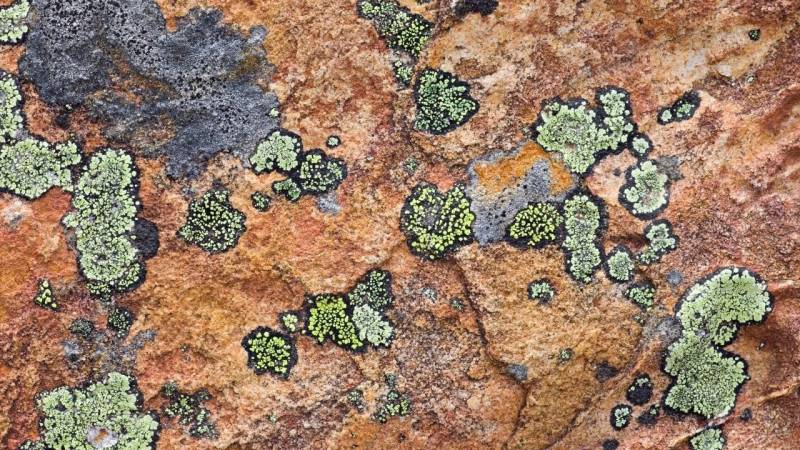
Foliose or leafy lichens resemble a flat design and lie loosely on the upper cortex. These lichens colonize, for example, mosses or rocks. Growth takes place on the leaf margins.
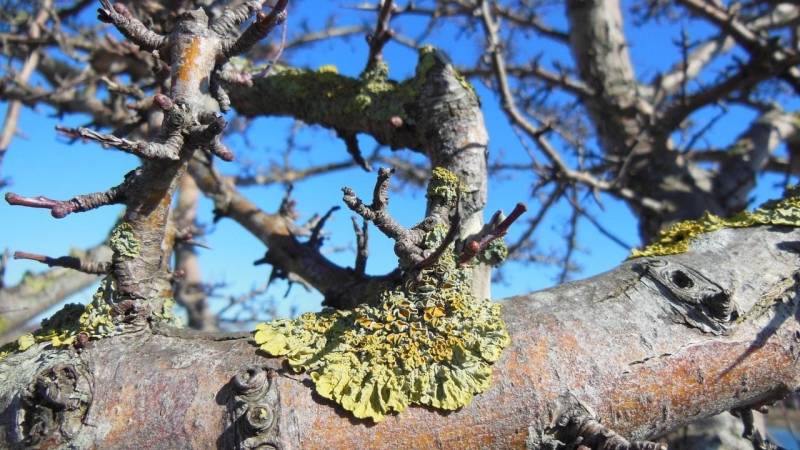
Fruticose lichens grow like an upright lawn on the ground or on a rock or hang from trees, rocks, or deadwood. Perhaps you also know them as beard lichens, band lichens, or tree beards. The growth zone is at the end of the respective branches.
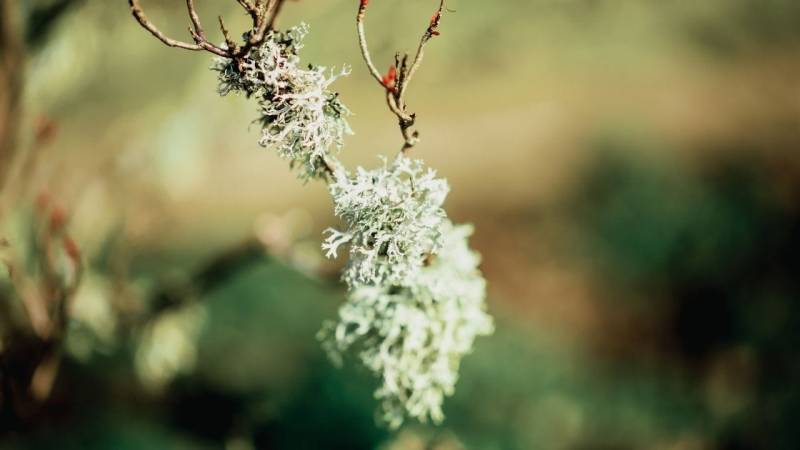
Gelatinous lichens have cyanobacteria as partners and swell jelly-like when moistened. They typically have a blackish or dark olive coloration.
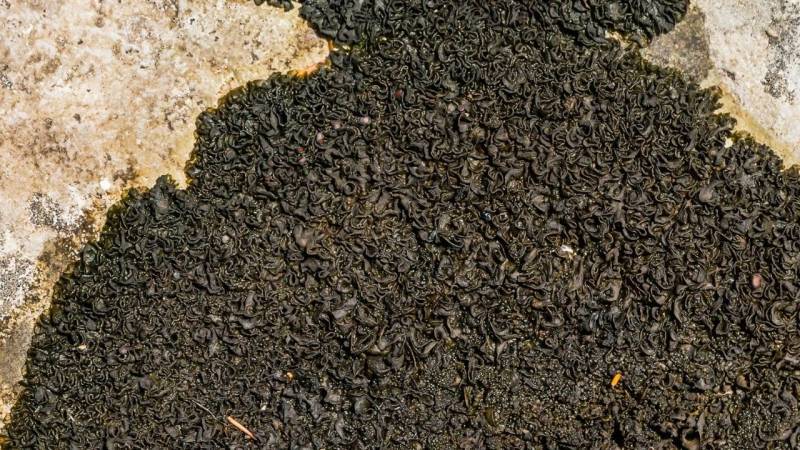
Lichens can reach an age of up to 4,500 years under certain circumstances.
How much water do lichens need?
Without true roots and without protection against evaporation, there is no active water intake. But lichens have a trick: they absorb water through their surface.
If the environment is very dry, they enter an inactive, lifeless state (similar to moss). In this state, the water content may be less than ten percent of the dry weight.
However, lichens survive better with almost complete loss of moisture. This is because it enables them to withstand temperature extremes or high levels of light intensity.
It has been shown that lichens that were artificially moistened actually lost their vitality. This state of rest is helpful, especially in cold zones.
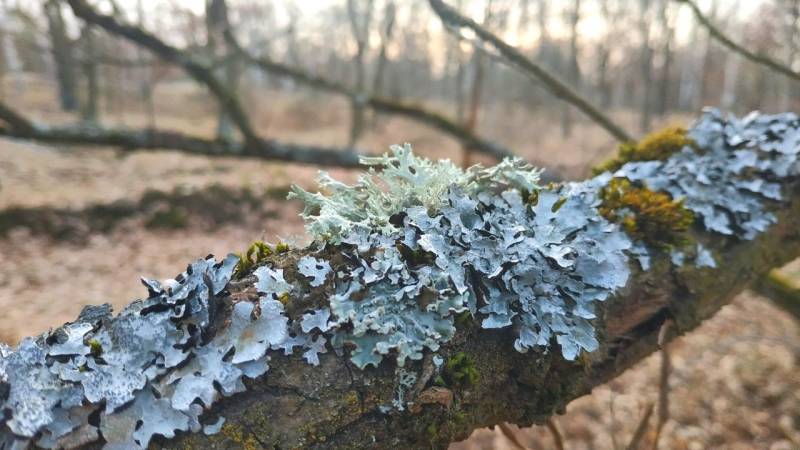
Frozen water cannot stimulate metabolism. Reactivation occurs upon subsequent water intake.
When the water content is between 65 and 90 percent of the total storage capacity, the effectiveness is at its highest. The photosynthetic rate is generally highest in the morning due to dew.
Some lichens grow particularly slowly due to certain circumstances. For example, crustose lichens only grow a few tenths of a millimeter per year, while foliose lichens grow less than one centimeter. However, in subtropical cloud forests and near coasts, the growth conditions are optimal due to a relatively constant humidity.
How and where do lichens spread?
Due to their slow growth, lichens prefer areas where they are not overlaid by many other plants. This also means that lichens can survive in extreme environments.
Occurrences have been found on bare rocks, in the Himalayas, in deserts, marshy areas, and permafrost regions.
They can withstand temperature fluctuations between -47 degrees Celsius and +80 degrees Celsius. Around 200 species of lichens are known to exist even in Antarctica.
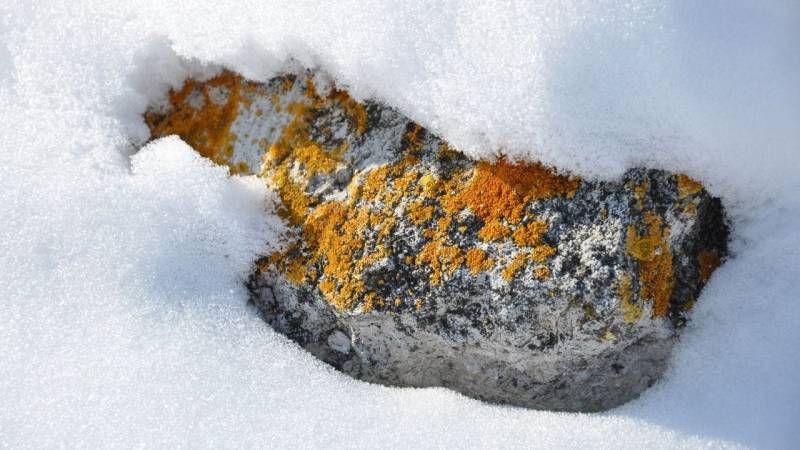
In addition, there are lichens of amphibious nature that live in water. The structure grows on soil and rocks as well as on tree bark, metal or plastic.
Do not consider tree lichens as parasites, as they do not take any water or nutrients from the plant. Some specific species, however, require basic rock such as dolomite or limestone, or acidic silicate rock such as gneiss, basalt, or quartz.
But even in space, the persistent lichens can survive for about two weeks. Lichens prefer acidic bark (pine, alder, birch) or basic bark (walnut, elder, sycamore).
How do lichens reproduce?
While one partner in the symbiosis cannot produce reproductive cells, the fungal partner reproduces sexually. Sexual spores are formed in "tubes" or "stems."
In lichen with tube fungi, spores are formed in fruiting bodies. Scientists distinguish between apothecia and perithecia. The structures of the apothecia are sharply delineated from the lichen bed, round, disc-shaped, or key-shaped.
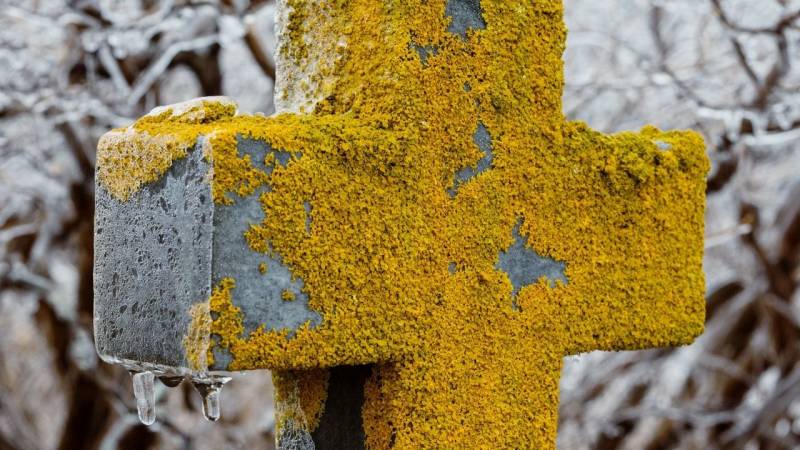
The hymenium layer is located above or within the apothecia. It does not produce spores in part. The structures of the perithecia, on the other hand, are spherical and almost closed. Spores are formed, which emerge through a pore. In general, the fungus is also capable of asexual reproduction. Through airborne dispersion, they colonize isolated monuments, for example.
In general, the fungal partner requires a free algae or bacterial partner, over which it will dominate. This occurs as soon as both partners have a large nutrient requirement.
There are also special vegetative propagative organs. In this way, the fungus and the algae propagate simultaneously. Isidia are outgrowths that break off due to weather or contact, and thus form a new lichen on new substrate.
When grains emerge from fungal threads and algae that are poorly intertwined, the botanist speaks of soralia. If these grains spread, there is also frequently new lichen formation.
Lichens as a food source and habitat
In areas where there is little vegetation, lichens serve as the main food source for reindeer or elk.
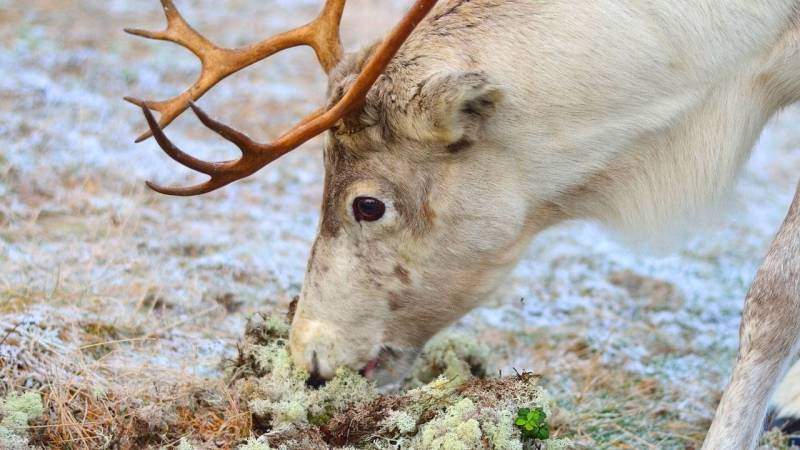
Butterfly larvae, snails, insects, mites, or dust mites sometimes feed on lichens as well. The structure also serves as a habitat or camouflage for insects, mites, tardigrades, or caterpillars. Many birds use lichens for nest building.
How are lichens used?
Especially in times of need, people used to cook lichens or at least use them as a flour additive.
For example, Usnea lichen was fermented and then roasted to make it edible. Alectoria was boiled for three hours, then dried and later used as a thickener in soups and stews.
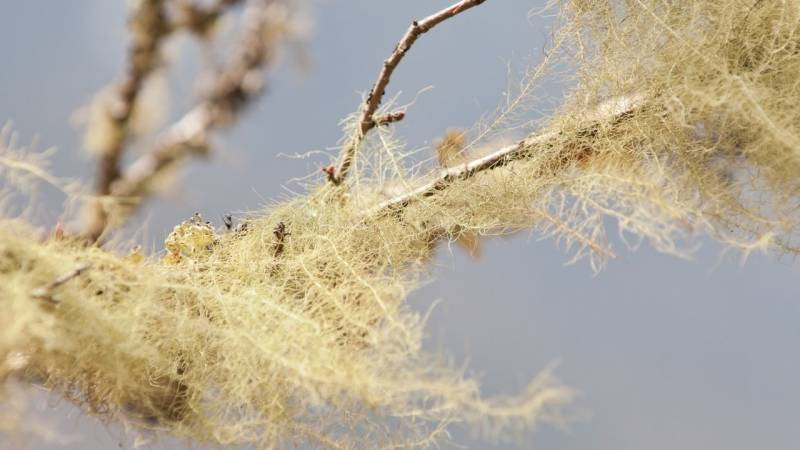
In certain expeditions, the plant also served as survival food.
In the Indian region of Bellary, lichens are part of the curry dish rathapu. The navel lichen Iwatake can be found in Japan as a salad or soup. It is even considered a delicacy here.
In addition to food intake, lichens also serve as a medicinal remedy. In the past, lichens were used to heal athletes foot.
In the homeopathic field, some patients use the "True Lungwort" for lung diseases. During the Middle Ages, epileptics took lichens growing on human skulls, which were supposed to be beneficial for healing.
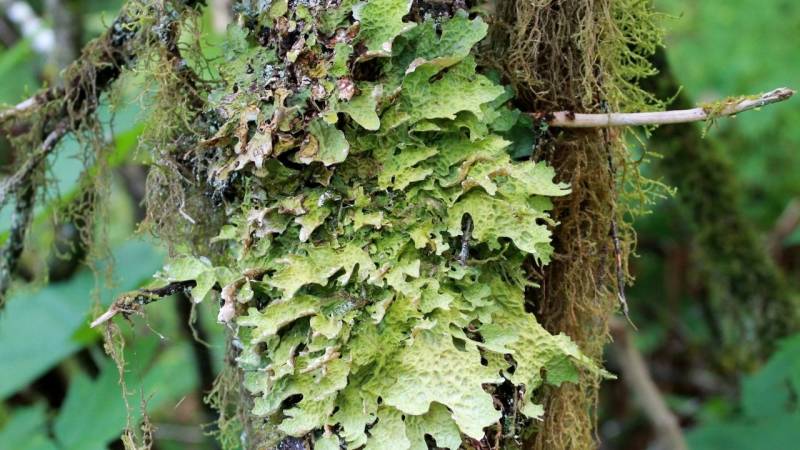
Due to various ingredients, the pharmaceutical industry is particularly interested in various application possibilities. For example, cough medicines often contain "Icelandic moss".
In addition, the perfume industry uses tree moss or oak moss. And finally, it is also possible to use lichens as dyes for fabrics or wool.
Conclusion
If you now see lichens in the most unusual places, as a new expert, you will know that the plant is able to withstand extreme conditions.
In addition, it will now be easier for you to determine the respective species based on their growth form or color.
And finally, the additional knowledge about historical findings, water supply, reproduction, and possible uses intensively rounds off the newly acquired knowledge about lichens.


Author of the guide
Martin Gebhardt
Hey, I'm Martin. On my blog, you will learn the basics and numerous details about living in the wild. I think survival, bushcraft and the good life in nature are the keys to happiness. Find me here on Instagram or on YouTube. You can find more about my mission on the About Me page.
Was this guide helpful?
29 people found this guide helpful.
4.87 out of 5 points (30 Ratings)
Comments (0)
This post may contain affiliate links. So if you click on the links and make a purchase, I will receive a small commission at no additional cost to you. Click here, to learn more about it.



